ADVISORY:
This article unavoidably touches on sensitive matters, namely trans issues. As such, I have worked hard on it, wishing to express myself in a respectful way without being misunderstood, while criticising the game’s weirdly retrograde gender attitudes.
Nothing I have written here comes from a place of hostility to trans people, and I hope that will be clear. I welcome all engagement, so long as it is respectful and in good faith.
If you, like many of us, are sick to death of gender discourse, it might be wise to skip this one. My sympathies are with you, but someone has to document this shitshow.
It is also very long, and should be treated as a double-bill. Put the kettle on, pop some amphetamines, and get comfy.
More writings on the Dragon Age series and other roleplaying games can be found here.
Introduction
As regular readers are well aware, Dragon Age: The Veilguard has been my white whale of bad fantasy media for some months now. I’ve outlined various aspects of the comprehensive shoddiness of Veilguard before, and there’s no shortage of things to make scathing remarks about. Here, though, I want to examine something more specific, which has not been as widely discussed as the game’s other failings.
I want to make the case that Veilguard has a problem with women. This is a minority view even among critics of the game1, and the evidence is equivocal, but it’s one that rings true to me personally. It’s not a pattern that’s blindingly obvious on the surface - I didn’t recognise it independently, but after it was pointed out to me, I could not stop noticing it. It’s a kind of vague and ghostly form of misogyny, the kind that could only rise from the depths of a intensely ‘woke’ group of people’s collective subconscious, and as such it’s easily overlooked, dismissed, or explained away.
But should it be?
In writing these words, I am conscious of the pitfalls of evaluating media in terms of identity politics. I have been down this road before, e.g. with my Blood of Elves article, which remains my most read but proportionally least liked piece2, and also with some of my House of the Dragon articles. However, I stand by my approach in each case, on the basis that Blood of Elves, HotD, and Veilguard all actively demand to be evaluated in terms of gender politics and in no other terms, the former two because they are fixated on various aspects of femaleness (in BoE’s case, a twelve year old’s breasts), the latter because it shoves women to the back of the bus, as we’ll see.
This is also a game that was unjustly praised by mainstream critics, who without exception felt the need to include pious comments about the ‘right-wing backlash’ against the game in their reviews, as if right-wingers mocking something that is both stupid and left-wing3 is newsworthy or meaningful information. These kinds of comments signal that the game is an example of goodthink that is to be given an easy ride critically, and not held to the same high standards of political correctness that other media has been. My aim here is to address this imbalance by subjecting Veilguard to the same harsh scrutiny to which, for instance, Kingdom Come: Deliverance was subjected back in the day4. So, I am somewhat playing devil’s advocate here, and I won’t pretend spite isn’t a motive, but I wouldn’t put my name to anything if I thought there was nothing to it.
Here, we will also be looking at the game’s depiction of trans people, which is supposedly groundbreaking enough to excuse Veilguard’s other faults. I am going to dispute that, on the basis that its flagship trans character is so extraordinarily unlikeable and stereotyped, and has surely done more harm than good.
The companion quests, aka confront the monstrous-feminine repeatedly
The most obvious manifestations of misogyny in The Veilguard can be found in the companion quests - five out of seven involve a female villain, which range from monstrous maternal figures, to domestic caricatures, to grotesque depictions of female desire.
(Ghilan’nain, one of the main villains, is both monstrous and maternal, and some of these are likely intended to parallel her. But we’ll get to that.)
Several of these female villains are not merely villains who happen to be female, who could be gender-swapped with little or no change, but actually have their villainous traits specifically linked to their femininity, via either maternity or female sexuality. In isolation, any one of these examples doesn’t prove anything, but taken together they reveal a certain tendency.

These female villains are:
Shathann - Taash’s mother, who is a caricature of an LGBT person’s strict and unsupportive parent, and to a great extent the real ‘villain’ of Taash’s storyline. Shathann doesn’t seem to care that Taash is bi, but is confused when Taash comes out as nonbinary, because she literally doesn’t know the term or understand the concept, and her Qunari culture has very strict and rigid gender roles. She also pretty clearly feels threatened by Rook (the player character), who is Taash’s de-facto therapist and potential love interest5, and has built up a disproportionate influence over Shathann’s child in a short time. The player is never allowed to point out any of these aggravating factors to Taash, though - if pursuing this questline, Rook is forced to be present for sensitive conversations that should be between Taash and Shathann, and to constantly validate Taash’s black-and-white6 thinking. As such, Shathann is pretty much caricatured as a ‘bad mother’ until the very end of the questline, when she of course dies violently on-screen to further Taash’s character development. So, she’s a fridged woman on top of everything else.
Zara - An evil blood mage in Lucanis’ questline who is a vampire-like temptress/seductress archetype, bathes in blood and fights the player naked while covered in blood. Revealed to be a withered old woman who is bathing in the blood of virgins (I assume) to restore her beauty. So, she is pretty much a one-dimensional monstrous depiction of female vanity and desire. Violently killed on-screen by her lover, then her still-naked corpse is reanimated through necromancy to be interrogated. The whole thing is in very poor taste, and stands out as such in a game otherwise so (over)confident of its progressive credentials. Was Heinrich Kramer the guest writer for this quest?
Isseya/The Gloom Howler - Grotesque blighted former Grey Warden, who wants to abduct the last remaining griffins and infect them with the Blight. She is very much a ‘bad mother’ archetype, being obsessed with the young griffins (symbolic proxies for children; Davrin is often referred to as the griffin Assan’s dad) which represent the future. Isseya had previously featured in a novel, readers of which were unhappy to see this heroic figure reduced to a monster who worked against everything she valued in life. The physical grotesqueness and maternal aspects of the Gloom Howler link her to Ghilan’nain, also very much a ‘bad mother.’
Aelia - Another one-dimensional blood mage, and villain of Neve’s storyline. There’s very little to say about Aelia, she’s just an evil witch who uses mind control a lot.
Johanna Hezenkoss - A failed lich and necromancer, supposed to be brilliant and power-hungry. Again, nothing substantive to comment on.
So, five out of seven of the companion questlines feature female antagonists7, and at least three of the five have their ‘evil’ actions strongly associated with their femininity (Shathann and Isseya - maternity; Zara, female sexuality). I would say that Aelia and Hezenkoss are less suspicious, as they could be gender-swapped with little change to their motives or identity, although Aelia does have witch/vampire connotations. Hezenkoss’ mad scientist/necromancer/‘brilliant but insane’ archetype is more traditionally masculine, so I’m letting her off the hook.
Ghilan’nain
Ghilan’nain is a difficult character to analyse, because she’s a crazy betentacled Resident Evil villain, and also the least talkative of Veilguard’s primary villains. She’s an ancient elven goddess who specialises in creating monsters by manipulating the Blight to mutate people and creatures.
She is called the Mother of the Halla (Halla being a type of deer which are sacred to the elves), and is clearly inspired by the mythical Echidna, the mother of monsters, which is reflected by her humanoid/snake character design, and by her hydra-like Archdemon (the Greek hydra being one of Echidna’s children). She has a maternal affection towards her creations, though perhaps seeing them more as pets than children. Still, she’s pretty firmly in the ‘archaic mother’/‘monstrous womb’ categories of female monsters8. In this context, the tooth-filled fleshy eye-holes behind her mask are a little, um, suspect.
Ghilan’nain is not Veilguard’s worst villain: she’s very camp and more than a little SHODAN-esque9, and her design is excellent. However, I think it worth describing her here, because she is so textbook monstrous-feminine, and in a game with so many negative/monstrous depictions of women, it’s hard not to make connections.

The gender identity rabbit hole
Another whole can of worms, which I’d rather not put my hands in, but which Veilguard is kind of forcing me to, is the game’s preoccupation with gender identity, especially nonbinary identity. I don’t enjoy addressing real world, current-year matters so directly and so bluntly, but since Veilguard is nigh-illiterate in the language of metaphor, and barely pretends to be a separate setting from mid-2020s Earth, it’s unavoidable.
For a start, Veilguard has a habit of conflating nonconforming with nonbinary in a very simplistic (or binary, if you will) way, which feels much like old fashioned gender essentialism but with extra steps. We see this most obviously with Taash, who transitions to nonbinary but is initially introduced as a woman who is butch, aggressive and lesbian-coded10, and we are clearly supposed to retrospectively read these traits as evidence that Taash was never a woman. I can’t help but read into this a bit. To me, there’s a pretty straightforward implication there that women have to look and act a certain way (i.e. feminine, demure, straight-acting) to affirm their status as women, and if they don’t then they’re not women; the game elsewhere implies the equivalent for men11. This is part of that whole nature-nurture debate that at this rate will be raging until the heat death of the universe; I don’t propose to take a side, being very gender-agnostic myself12, and corresponding neither with the extremes of Rowlingism nor with whatever Veilguard’s trying to say. However, I don’t think it’s over the line to say that I find the latter reductive: it gives far too much weight to traditional gender norms, and treats the superficial as deeply and self-evidently meaningful.
During the ensuing gender journey, Taash gets a free pass to make personal comments about women, picking on Neve for [checks notes] for liking dresses (we have never seen Neve in a dress13) and declaring that ‘no-one likes being a woman.’ Instead of feeling indignant, Neve performs the assigned female role of being conciliatory and supportive to someone who out of nowhere is criticising her simply for dressing how she likes (i.e. expressing her own gender identity), though they are both adults and it is by no means Neve’s job to be Taash’s mother. Even Taash’s apology to Neve at the end of the scene includes a strange reference to Neve’s makeup, which could be a crude sexual reference (par for the course with Taash), or could imply that Taash thinks Neve (representing women) is shallow for wearing it. Taash does, by the way, make a number of weird comments around women14 that would simply not have been given to an AMAB character in the current era, including [checks notes again] smelling their arousal and telling them about it.
For what it’s worth, Taash also bullies men, most notably the necromancer Emmrich, calling him a ‘skull-fucker,’ which is beyond offensive to a man whose entire vocation (/religion) is built around honouring the dead and treating them with respect. Taash, whose motto is ‘you don’t get to tell me who I am’15, also repeatedly calls Emmrich a ‘death mage’, a term he dislikes, and persists even when asked not to use it, insisting ‘but it’s what you are’. The irony is palpable, and it’s made all the more glaring by the fact that neither Emmrich nor the player are allowed to call Taash on it, or point out the hypocrisy. What are we to make of this? Are they implying that Taash is entitled to unconditional respect, but Emmrich isn’t? You can abuse a person for their vocation, beliefs and way of life, but pronouns are sacred? Does anyone believe that this narrative would let a cis person away with repeatedly and deliberately calling a trans person the wrong thing, and insisting ‘but it’s what you are’ when confronted? Shathann was killed off for less.16
So, strangely enough, Veilguard’s flagship trans character is distinguished by doing to cis people the two things more usually attributed to transphobes: policing others’ gender expression, and refusing to respect their preferred forms of address17. As if that wasn’t enough, Taash also embodies every possible ‘snowflake’ stereotype, being immature, self-absorbed, entitled and demanding, receiving ‘special treatment’ from the narrative and from other characters, and being triggered by innocuous things such as Neve’s alleged liking for dresses. Is this really a diversity win? Or is it actively reinforcing negative attitudes towards the minority supposedly being championed?
(I will also note that DA has not been great about this historically, either, though a lot of people have amnesia about that; Inquisition featured Krem, who is FtM, and just randomly overshares about this the second time he speaks to the Inquisitor, in a way that a person who has apparently been successfully passing for years would not in front of a total stranger who is their boss’s boss, and who has been calling Krem by the correct pronouns anyway. Again, it makes Krem seem self-absorbed, inappropriate18 and socially inept, and it’s difficult to read the scene as anything other than a sermon from writers who felt that it was their place to ‘educate’ players, as if we all needed to be sat down and told what transgender is in a game about elves and dragons. The Inquisitor also gets given very insensitive dialogue options in this scene, to justify the lecture. A lot of players, in light of Taash, have had rose-tinted spectacles about the Krem scene, which says nothing good about Taash.)
The symbolism of Taash’s arc also broadcasts an adolescent egoism which many players were always going to find repulsive. Taash is innately special, you see, being able to breathe fire like a dragon, but has been told to suppress this (a crude metaphor for the closet), and per an ancient prophecy is actually not only different from other Qunari, but superior to them by birth, and has the God-given right to rule them. The same writer, Trick Weekes, produced Solas, an arrogant narcissist19 who the narrative has infinite sympathy for, and Mordin Solus in Mass Effect, a prototype Solas who was defined by his intellectual superiority. Also, note that mirrors and reflections are a constant (and I mean constant) motif in Veilguard20, as in, say, the myth of Narcissus.
Going back to the gender essentialism, it is also telling that of the two candidates to rule Tevinter, Maevaris, a (trans) woman, is the reformist, conciliatory, and non-confrontational option21, whereas Dorian, a (cis) man, is the radical, aggressive, and confrontational option. We have seen a very similar dynamic before in Inquisition, with the peace-loving Empress Celene vs the militant Duke Gaspard. There’s a very clear, binary set of assumptions there, closely related to the way in which Neve mothers Taash, and also to the appeasing roles assigned to Mythal, Morrigan and the Inquisitor regarding Solas22.
Speaking of…
Mythal, the Inquisitor, and the redemption of Solas
This is a big topic, and connected to many other weaknesses of Veilguard’s core story. However, it is more than relevant, so I will try to break it down as best I can.
The gist is that in one version of the game’s ending, which is very clearly the writers’ preferred/‘canon’ ending, and the one towards which players are led, the main villain Solas is forgiven for everything, gives up on his genocidal plans, and is considered to be ‘redeemed.’ This basically happens because Mythal, a very morally ambiguous/borderline evil maternal figure (yes, another one), who was Solas’ friend/lover in ancient times, takes full responsibility for Solas’ actions, and tells him that he doesn’t have to do what he’s doing, which he now claims to be doing on her behalf (he never claimed this before the final scene).
Here’s the thing, though: Solas was never doing this for Mythal. He was doing it for himself.
Inquisition spent about fifty hours establishing beyond any reasonable doubt that Solas was motivated by:
guilt
his feeling of responsibility for the elves
his hostility to humans
above all, his arrogant belief that only he can make the world right (!!!)
As for Mythal, she may or may not have approved of his plan. Veilguard does some confusing mental gymnastics involving different fragments of Mythal’s spirit, to explain how Mythal both did and did not approve of Solas’ actions. This seems like a post-hoc way of making sure that there’s a version of Mythal who can ‘redeem’ Solas at the end by taking the responsibility on herself, which has little to do with how the story should end, and more to do with the fact that Solas is a fan favourite, especially for the large section of the fandom who had him as their Inquisitor’s love interest in the previous game.
To me, it seems very questionable to have a woman whose only purpose in a narrative is to redeem a male villain by taking the weight of his actions on herself like a scapegoat. I would also link this to Solas’ animal symbolism as a wolf - they are implying that he, like an animal, does not have the same moral culpability a human has. But Mythal apparently does, though she like Solas is also an embodied spirit, and is therefore no more or less ‘human’ than he.
(I should note that animal symbolism is also odiously present with Taash, who does a lot of roaring, grunting, and talking about how ‘girls smell nice’. FFS Weekes, please stop being weird in public.)
I must also note here that Morrigan, a beloved returning character from Origins and Inquisition, was reduced to another prop for Solas’ characterisation, as the new vessel for Mythal’s spirit. What this meant for her, a huge question in the context of previous games, is only dealt with incidentally, and is far from the focus. So, that’s another woman who is treated as a plot device for Solas’ development, and who has no independent arc of her own, though if anyone in this game had a right to one, she did.
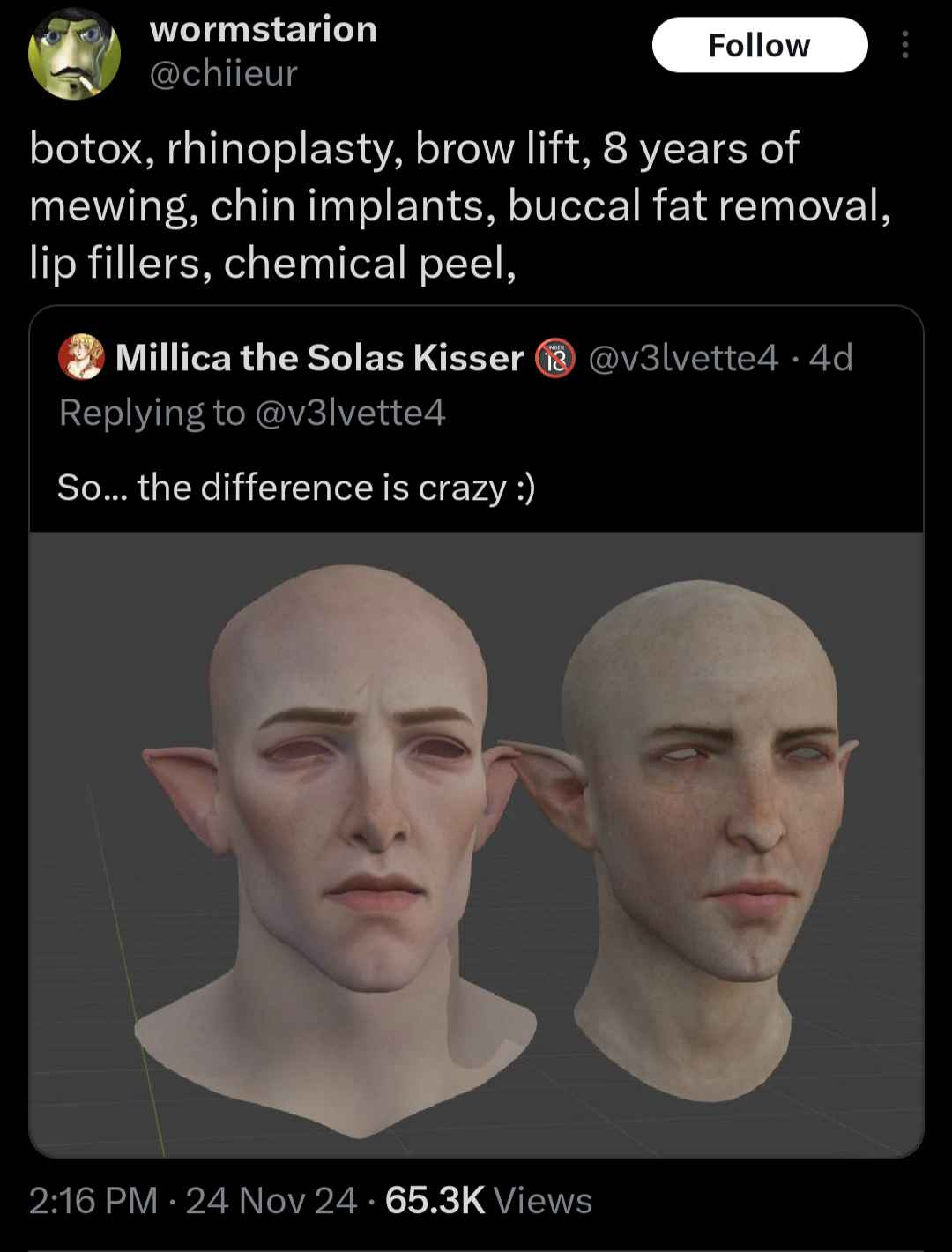
Speaking of characters whose sole purpose is to redeem Solas, and who deserved better, we need to talk about the Inquisitor, the player character from the previous game (who can be male or female). The Inquisitor was done dirty by this game in a great many ways, all of which de-value the character and make them solely an accessory of Solas’ characterisation.
The Inquisitor’s history with Solas involves being:
lied to
manipulated
betrayed
maimed (lost an arm)
seduced under false pretences (if romanced)
dumped (if romanced23)
only allowed to live because Solas believes they’re not a threat anymore
The Inquisitor, therefore, had major unfinished business with Solas, and pretty objectively should have been the protagonist, according to all narrative and common sense rules established over the last several thousand years of storytelling. This is yet another reason Bioware’s choices cannot be excused or entirely pinned on EA - way back in 2015, with Inquisition’s final DLC, they were already telling a confused player base that they had committed to retiring the Inquisitor, after spending a whole 50+ hour game setting up this character’s conflict with the next game’s villain. This discontinuity may be the single most baffling narrative decision in the history of roleplaying games, and seems to have been informed by nothing other than the arbitrary self-imposed rule that every Dragon Age game must have a new protagonist. They also inexplicably decided on a ten-year time skip between games, which strips away all urgency and sense of momentum from the plot, and leaves us wondering what the hell Solas and the Inquisitor have been doing for the last decade.24
The sidelining of the Inquisitor also appears very ableist, as the loss of their arm was meant to mark the end of their tenure as protagonist, the implication being that the Inquisitor was no longer capable with one hand, and was nothing without Solas’ magic in the lost hand. I’d go so far as to say that this is not just ableist, it’s anti-humanist, and against the spirit of much of modern fantasy: what would Tolkien think of the notion that a wounded hero - like, for instance, Frodo Baggins - was worthless without a magic elven bauble? Did Le Guin write that book about hard lessons and the limits of magic for nought? What of George R.R. Martin, and his compelling disabled antiheroes? Even Robert E. Howard spent his short life writing about heroes who overcame monsters and sorcerers by strength and cunning, rather than by magic.
So, if this were a proper fantasy story, we could expect a long-awaited reckoning between these two characters, and for the Inquisitor, one-armed and stripped of special magical abilities, to somehow defeat this immortal god.
Instead of fighting Solas, the Inquisitor’s role in Veilguard is to:
therapise Solas
feel sorry for Solas
tell the player how smart and complicated Solas is
tell the player how sad and empty their life is now (without Solas)
carry no weapon and wear no armour at any point (i.e. stripped of symbols of power and independence; forcibly defined as a conciliator; dare I say emasculated? Doesn’t even get a unique costume, whereas every companion gets multiple.)
have the disability Solas caused downplayed (an unobtrusive prosthetic resembling a glove, while the game features very prominent prosthetic limbs elsewhere25.)
give the player an item which starts a series of quests to unlock the ‘redeem Solas’ ending
There is no version of the Inquisitor that does not act like a pining ex whose world revolves around Solas, but a female version that actually is Solas’ discarded lover is particularly egregious, as she remains utterly devoted to him a decade after he betrayed her and broke her heart, and talks about how empty her life is without him. She cannot be angry with him, or view him as irredeemable, let alone take up arms (no pun intended) against him. Perish the thought.
To make matters worse, even if the player chose at character creation to make an Inquisitor who swore to stop Solas rather than to redeem him, the Inquisitor will have the exact same role, and will even naively ask whether Solas can be reasoned with in the final act. The illusory nature of the choice is transparent, to the point that it feels dishonest: Bioware implied they had made a game where the player’s choices would be respected and given weight, but did no such thing. Straight-up lying to the player about a key narrative point is, in my opinion, a breach of the social contract between author and audience.
All versions of the ‘redeem Solas’ ending also involve the Inquisitor kneeling before Solas as if they are guilty before him (????), and the romanced version also has the Inquisitor following him into the Fade, becoming his immortal therapist/parole officer for the rest of eternity. Damnation seems preferable.
Closing thoughts
So, does The Veilguard hate women? Well, maybe, just a little bit. I can’t prove what’s going on in the shadowy Jungian depths of these writers’ minds, but I can comment on what emerged into the light of day, and I think it’s fair to say that a lot of questionable stuff slipped through the cracks in a room full of yes-men, Bluesky activists, and people with mommy issues.
Ironically, Veilguard can’t even get the things it ostensibly cares about right, packing every negative stereotype about trans people into one character, while also treating its cis characters in a grossly inequitable way whenever they interact with Taash. Any intelligent person could have foreseen that this would not go down well, so either the other writers are not intelligent, or they’re working in a censorious environment (/intellectual framework) that made them afraid of confrontation.
Although no-one comes out of Veilguard looking good, the game’s female characters may be getting the shorter end of the stick. There’s a definite tendency for ‘positive’ female characters to be defined in old-fashioned gendered ways, making them non-confrontational, conciliatory, and self-sacrificing even towards those who treat them badly; on the other hand, the game also depicts a number of women who are monstrous in distinctly feminine, and frequently maternal, ways.
These trends come together in the forgiveness of Solas: the female Mythal takes the role of both monster and conciliator, i.e. bad mother and good mother, taking the blame for all of the male Solas’ misdeeds, and while there is no version of the Inquisitor that doesn’t fawn over Solas and want to forgive him regardless of player input, this is most odious in a female Inquisitor who romanced Solas, who cannot even express indignation at the man who broke her heart, maimed her, and used her organisation’s resources to plot genocide.
There is something further to be said about the ‘bad mother’ villains vs the self-sacrificing women who ‘mother’ Solas (and to a lesser extent Taash), but I’ve spilled more than enough digital ink for one post, and I doubt you need my help to join those dots.
If you type ‘Veilguard misogyny’ into Youtube at time of publication, you will not find anything long-form or serious examining this. Reddit and Bioware’s forums are no help either, but the less said about that, the better. The point is that I’m doing cutting edge stuff here, and providing a service.
It’s currently hidden from the ‘most popular’ section, as I think it misleadingly suggests that all I do here is write shrill quasi-feminist polemics, which, yes but actually no. If you have mixed feelings about The Witcher and its author, you might appreciate it.
Though only in the most trivial and superficial way.
This was an example of criticism as a force for good - KCD was fairly justifiably critiqued for its depiction of women and foreigners at release, and the creators’ response was to follow up with the excellent A Woman’s Lot expansion, and also with the new sequel, which depicts various minorities in Bohemia, and notably takes pains to humanise the much-maligned Cuman mercenaries from the first game. It’s great to see the sequel getting so much well-deserved praise and recognition, given the series’ rocky start as a crowdfunded passion project, whereas the prodigal Bioware has squandered its good name and massive audience through sheer complacency. There are lessons to be learned here - Warhorse has shown humility, openness to criticism, and respect for its audience; I would associate none of these characteristics with current Bioware.
Is it appropriate to be sleeping with someone as immature and fragile as Taash? The therapeutic tone of 90% of player interactions with Taash, and the fact that this 20-something is written like a teenager, brings a real ‘breach of professional ethics’ vibe.
Dare I say binary? Is that too catty of me?
Some of these questlines also have male antagonists, who are however less gendered in terms of traits and symbols, and therefore of less interest to us here.
Previous ‘monstrous womb’ Dragon Age horrors include the Brood Mother from Origins, and the related Mother from Awakening. The less said about those, the better. See also Flemeth, a crone who possessed her daughters, fitting Creed’s ‘witch’ category, and yet another bad mother. So, I guess these games have always hated maternity. DA2 also had a female final boss, though to be fair her male counterpart is a lot more physically grotesque and they’re about as bad as each other morally.
SHODAN being the megalomaniac AI villainess of the classic System Shock games. I do not, by the way, wish to imply that SHODAN is a misogynistic creation, she’s way too fun and charismatic for that, and belongs to a pulpy future-gothic tradition allied with Alien and Blade Runner.
Every companion is bi/pansexual, but Taash alone is specifically stated to prefer women and rarely be interested in men, and will pair up with the female Harding if neither are taken by the player. You can tell they 100% wanted Taash to be into women exclusively but someone had stipulated that every companion must be player-sexual.
Via Flynn, an AMAB nonbinary healer, who is softly spoken, has long hair, and occupies a non-combat/caring role. Therefore, per Veilguard’s worldview, Flynn cannot be a man, because men must be loud, short-haired, and abstain from doing ‘women’s work.’
i.e. I’m not sure I even know what gender is anymore, and at this point I’m too afraid to ask. This is not to say that I don’t think gender dysphoria exists, only that a lot of what is said in academic and activist circles is incoherent, confusing, and has little to do with real life.
Taash also complains here that Neve is ‘barely even wearing a shirt’. Taash is not wearing a shirt in this scene, never has and never will. I wish I was making this shit up. The dialogue in this game was written by either monkeys, AI, or people whose brains have been severely damaged by social media.
Possibly men too? I don’t have the willpower to sit through Taash Youtube compilations to verify that: I’m not sure anyone has that willpower. I am certainly aware of comments by Taash directed at Neve and Harding in certain contexts.
‘-but I get to tell you who you are, and critique your outfit.’
I do not class Shathann’s reaction to Taash coming out as equivalent. It’s shown that Shathann was literally just confused, and needed time to process a concept that was new to her and which had not been explained beforehand. Shathann was even shown to be accepting of the idea that Taash might be FtM, because such a concept exists in her culture and she understands it. So, she’s a conservative in the context of the game, but in IRL terms she’s quite liberal, which kind of shows how little any of this has to do with real life.
Incidentally, Taash also sulks when Shathann, a vegetarian for cultural reasons, refuses to eat a meal with meat; presumably, Taash knew Shathann’s preferences full well, having lived with her for decades, yet did not think them important.
Krem just randomly starts talking about breast-binding in public, which… your boss’s boss does not want to hear about your breasts, and you, a dysphoric person, probably don’t want to tell the class about them either, if we’re being realistic. Baldur’s Gate 3 and even Hogwarts Legacy, of all games, did this better, featuring trans characters who were never required to out themselves or deliver an After School Special.
I’m not going to justify this label in detail here - I think it’s fairly self-evident, but maybe I’ll do an in-depth ‘Solas is a narcissist’ post if/when I replay Inquisition and have to suffer his bullshit once again. The association between Solas and mirrors, his love of talking down to others, and his propensity for doing dramatic paintings of himself in heroic or monstrous contexts says it all.
I’m not just talking about ‘the mirror that makes you trans’, which Youtubers got a lot of mileage out of, but also the Eluvians, magic mirrors that let you access the Aeldari Webway the Elven Crossroads.
I’m told that Maevaris, who previously featured in comics etc., was done dirty by this game, having previously been a more complex and problematic character who was liberal only in the context of Tevinter, which meant being pro-rights for freeborn non-mages, but also pro-slavery. This was also true of Dorian in Inquisition; that nuance was ripped away in Veilguard, in which he is completely whitewashed and you can read a speech he made about how wrong he was for being so problematic back in Inquisition, like a 21st century politician trying to get himself un-cancelled. The original versions of these characters were liberal-for-Tevinter queer aristocrats, who were still products of their class and culture, and could be arrogant, hypocritical and self-serving. Bioware clearly got squeamish about depicting powerful LGBT people who aren’t 100% nice 100% of the time.
Harding is another woman who is inappropriately used to convey ‘pity Solas’ messaging, even if you encourage her to be angry about things Solas did.
Other sus things he does if romanced: disparages the Inquisitor’s culture and makes efforts to distance her from it, like an abusive partner would; wonders whether he is only attracted to her because of the effect of his magic on her, like the massive narcissist he is; has an age gap of several thousand years, and lies about it; constantly talks down to her. He’s part of the extensive romantasy canon of fictional men who should be monitored by the police.
To put it another way, imagine if Return of the Jedi took place ten years after The Empire Strikes Back, and featured a totally new protagonist with no connection to Darth Vader. Does that sound like a sensible premise for the conclusion of a series?
I don’t accept technical limitations as an excuse: with their $200 million budget, Bioware could have made preset bodies for the Inquisitor with appropriately sized and fitted prosthetics, and then limited selection to those presets when designing the Inquisitor at character creation. They didn’t do this because they don’t value the Inquisitor.


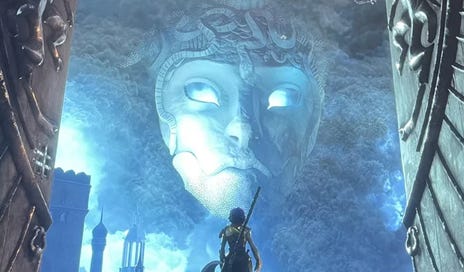


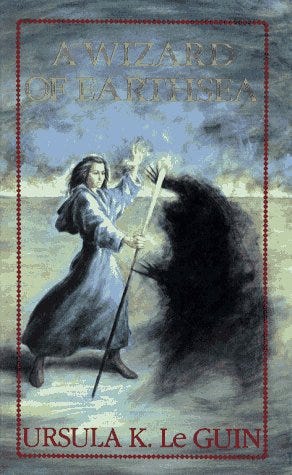
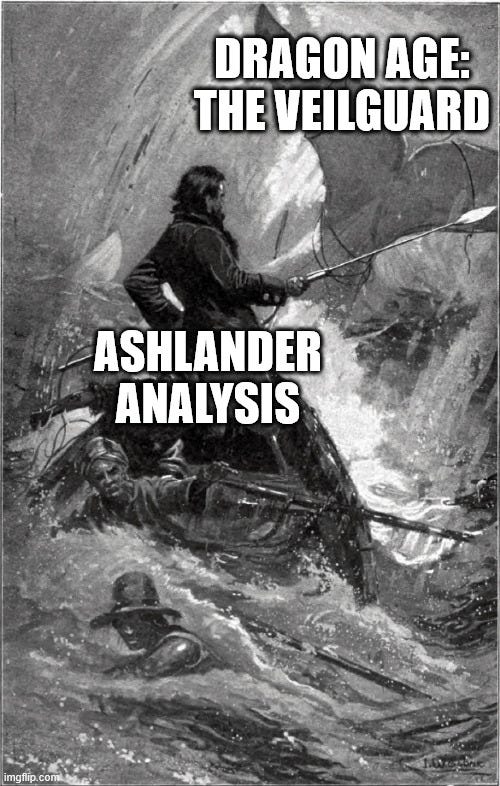

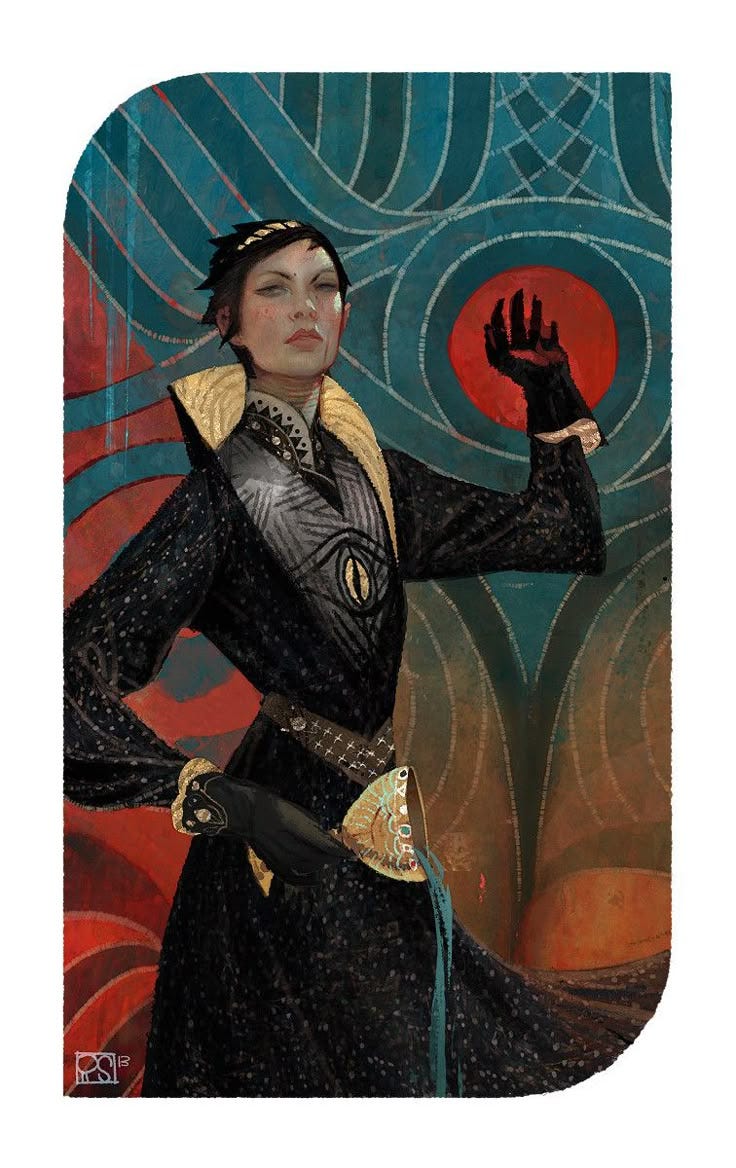

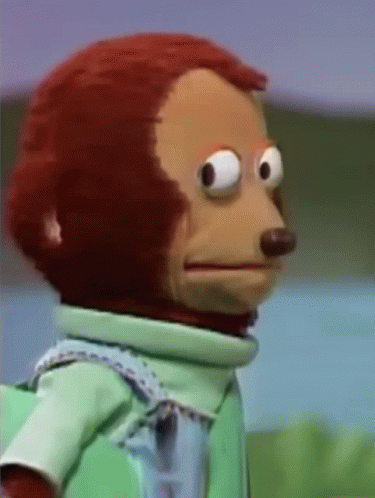

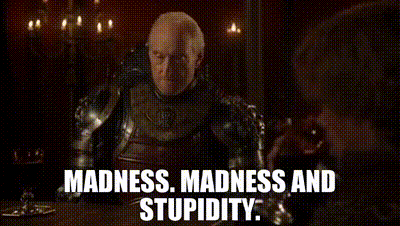

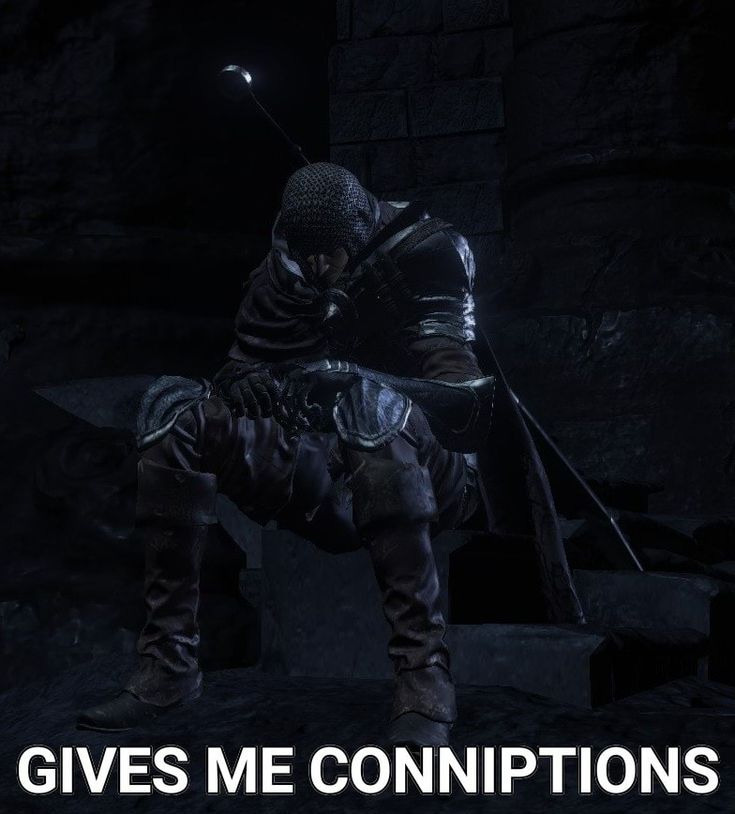
Great post. In general, it sounds to me as though Bioware is fully committed to a particularly strong level of audience capture - by far the most vocal and consistent group of supporters are the sort of social-discourse-obsessed fanfic writers who will carry water for any depiction so long as it's sufficiently insulting or baffling to someone lacking the proper interesting-identity bona fides. And the deeper the dependency grows, the less nuance or even moderation is tolerated. Once you aim to appeal to the most confrontational and biased player base, it's hard to create well-rounded characters, develop believable relationships, or tell a good story, which is supposed to be the goal of these character-driven RPGs in the first place.
And as I've said before, I think one of the issues is the fact that big-budget RPGs pull double duty in the West to take the place of dating sims, with more and more focus spent on who can be romanced, and how 'satisfying' that romance is for the players and fanfic community. So when Taash, for example, throws out whatever initial character traits they had to be open to a romance with the player whatever their gender expression happens to be, it's probably less a specific instance of bad writing and more a standing order that all companions have to be DtF any player character, otherwise someone's going to feel left out and that's a bigger threat to the audience than the loss of character development that prevents them from wanting to knock boots with their avatar. At least Taash appears to be extremely consistent in their intolerance of necromancy!
While I'd happily read your inevitable tirade about Solas when it drops, I'd like to suggest a more dedicated look at media use of the monstrous-feminine, if only as an excuse to discuss further how good SHODAN is.